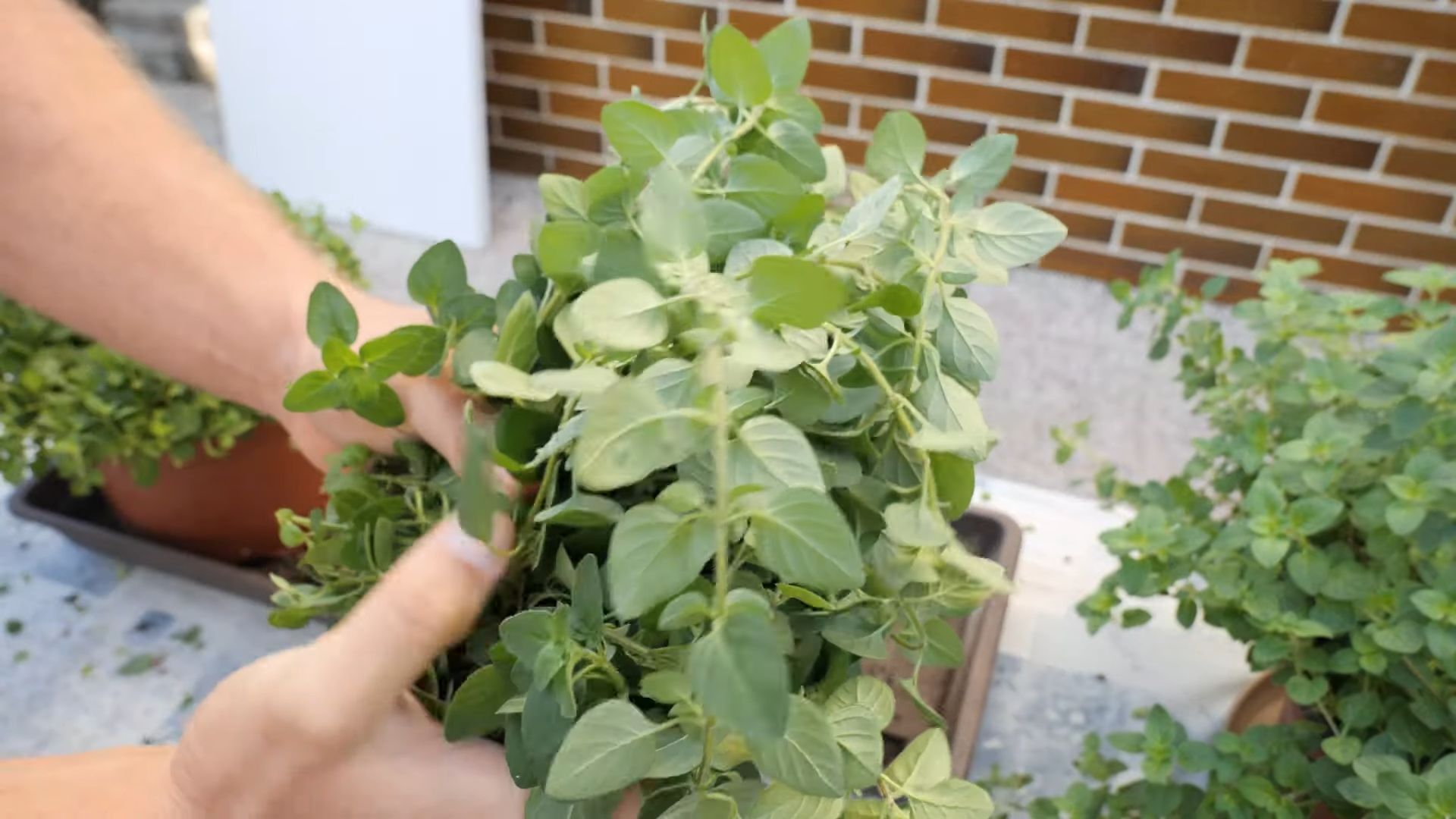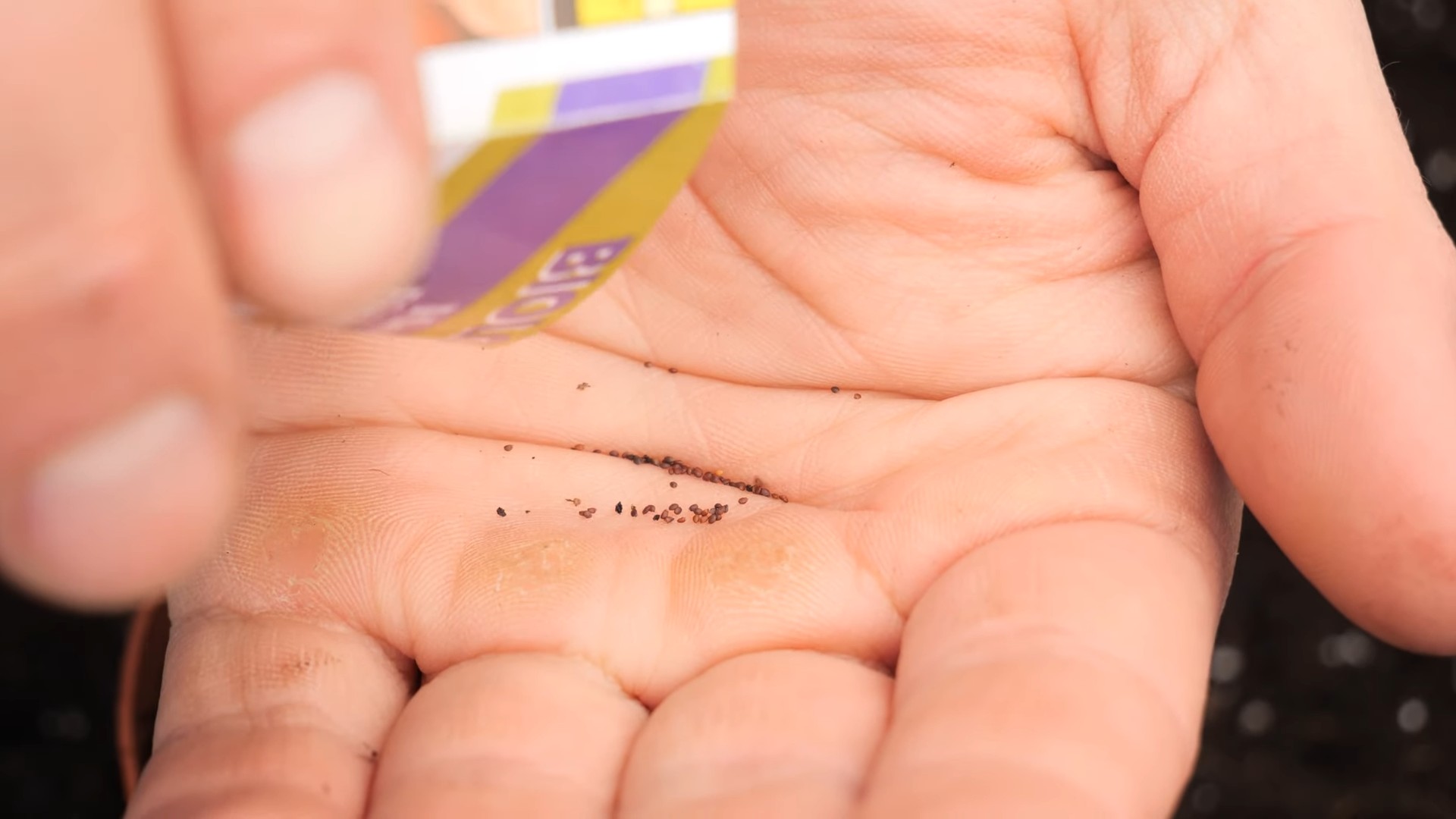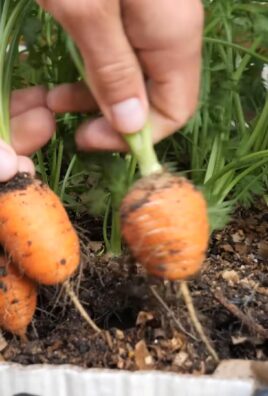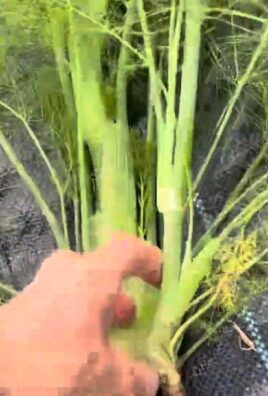Growing Oregano at Home is easier than you might think, and I’m here to show you how! Have you ever been halfway through a delicious recipe, only to realize you’re completely out of fresh oregano? It’s a culinary crisis we’ve all faced! But what if I told you that you could have a constant supply of this fragrant herb right at your fingertips, ready to elevate your dishes with its distinct flavor?
Oregano, with its roots tracing back to ancient Greece and Rome, wasn’t just a culinary staple; it was also revered for its medicinal properties and symbolic significance, representing joy and happiness. Imagine bringing that same sense of history and well-being into your own home!
In today’s busy world, convenience is key, and that’s precisely why growing oregano at home is such a game-changer. No more last-minute grocery store runs or settling for dried herbs when you crave that fresh, vibrant taste. Plus, you’ll know exactly where your oregano comes from, ensuring it’s organic and free from harmful pesticides. I’m going to share some simple, yet effective DIY tricks and hacks that will have you harvesting your own oregano in no time, regardless of your gardening experience. Let’s get started and transform your kitchen into a fragrant, flavorful haven!

Growing Oregano at Home: A DIY Guide for Herb Garden Success
Hey there, fellow herb enthusiasts! I’m so excited to share my tried-and-true method for growing oregano right in your own home. Fresh oregano is a game-changer in the kitchen, and trust me, it’s way easier than you think to cultivate your own supply. Let’s dive in!
Choosing Your Oregano Variety
Before we get our hands dirty, let’s talk oregano varieties. There’s more than one type, and each has its own unique flavor profile.
* **Greek Oregano (Origanum vulgare hirtum):** This is the classic, robust oregano you probably associate with Italian and Greek cuisine. It has a strong, pungent flavor.
* **Italian Oregano (Origanum x majoricum):** A bit milder and sweeter than Greek oregano, Italian oregano is a great all-purpose choice.
* **Mexican Oregano (Lippia graveolens):** Technically not a true oregano, but it offers a similar flavor profile with a citrusy undertone. It’s fantastic in Mexican dishes.
* **Golden Oregano (Origanum vulgare ‘Aureum’):** This variety is more ornamental, with beautiful golden leaves. The flavor is milder than Greek oregano.
I personally love growing Greek oregano for its intense flavor, but feel free to experiment and find your favorite!
Getting Started: Seeds vs. Cuttings
You have two main options for starting your oregano journey: seeds or cuttings.
* **Seeds:** Starting from seed is economical, but it takes a bit longer.
* **Cuttings:** Propagating from cuttings is faster and ensures you get the exact variety you want.
I’ll walk you through both methods.
Growing Oregano from Seeds
This is a rewarding process, even if it requires a little patience.
Materials You’ll Need:
* Oregano seeds
* Seed starting tray or small pots
* Seed starting mix (a light, well-draining mix is essential)
* Spray bottle
* Plastic wrap (optional)
* Grow light (optional, but highly recommended)
Step-by-Step Instructions:
1. **Prepare Your Seed Starting Tray:** Fill your seed starting tray or small pots with seed starting mix. Gently tamp it down to create a level surface.
2. **Sow the Seeds:** Oregano seeds are tiny, so sprinkle them sparingly over the surface of the soil. You don’t want to overcrowd them.
3. **Cover Lightly:** Gently press the seeds into the soil, but don’t bury them too deep. A very light covering of soil is sufficient.
4. **Water Gently:** Use a spray bottle to mist the soil thoroughly. You want to moisten the soil without disturbing the seeds.
5. **Create a Humid Environment:** Cover the tray with plastic wrap to create a humid environment. This helps the seeds germinate. You can also use a humidity dome if you have one.
6. **Provide Light and Warmth:** Place the tray in a warm location (around 70-75°F) with plenty of light. A sunny windowsill can work, but a grow light is ideal for consistent results.
7. **Monitor and Water:** Check the soil moisture daily. Keep the soil consistently moist, but not soggy. Remove the plastic wrap once the seeds start to germinate (usually within 7-14 days).
8. **Thin Seedlings (If Necessary):** Once the seedlings have a few sets of true leaves, thin them out if they’re overcrowded. Snip off the weaker seedlings at the soil line, leaving the strongest ones to thrive.
9. **Harden Off Seedlings:** Before transplanting your seedlings outdoors, you’ll need to “harden them off.” This means gradually exposing them to outdoor conditions over a period of about a week. Start by placing them outside for an hour or two each day, gradually increasing the amount of time they spend outdoors.
10. **Transplant Seedlings:** Once the seedlings are hardened off, they’re ready to be transplanted into larger pots or directly into your garden.
Growing Oregano from Cuttings
This method is faster and ensures you get a plant with the exact characteristics of the parent plant.
Materials You’ll Need:
* Healthy oregano plant (for cuttings)
* Sharp, clean scissors or pruning shears
* Rooting hormone (optional, but it speeds up the process)
* Small pots
* Potting mix (well-draining)
* Water
Step-by-Step Instructions:
1. **Take Cuttings:** Select healthy stems from your oregano plant. Cut 4-6 inch sections just below a leaf node (the point where leaves grow from the stem).
2. **Remove Lower Leaves:** Remove the leaves from the bottom 1-2 inches of each cutting. This will prevent them from rotting when they’re in the soil.
3. **Apply Rooting Hormone (Optional):** Dip the cut end of each cutting into rooting hormone powder or liquid. This will encourage root development.
4. **Plant the Cuttings:** Fill your small pots with potting mix. Make a small hole in the center of each pot and insert the cutting. Gently firm the soil around the cutting.
5. **Water Thoroughly:** Water the cuttings thoroughly after planting.
6. **Create a Humid Environment:** Cover the pots with plastic bags or place them in a humidity dome to create a humid environment. This helps the cuttings retain moisture while they’re developing roots.
7. **Provide Light and Warmth:** Place the pots in a warm location with bright, indirect light. Avoid direct sunlight, which can scorch the cuttings.
8. **Monitor and Water:** Check the soil moisture regularly. Keep the soil consistently moist, but not soggy.
9. **Check for Root Development:** After a few weeks, gently tug on the cuttings to see if they’ve developed roots. If you feel resistance, that means roots have formed.
10. **Transplant Rooted Cuttings:** Once the cuttings have developed a good root system, they’re ready to be transplanted into larger pots or directly into your garden.
Caring for Your Oregano Plant
Whether you started from seeds or cuttings, here’s how to keep your oregano plant happy and thriving.
Sunlight:
Oregano loves sunshine! Aim for at least 6-8 hours of direct sunlight per day. If you’re growing oregano indoors, a sunny windowsill or a grow light is essential.
Watering:
Water oregano when the top inch of soil feels dry to the touch. Avoid overwatering, as this can lead to root rot. Oregano prefers well-draining soil, so make sure your pot has drainage holes.
Soil:
Use a well-draining potting mix. A mix of potting soil, perlite, and vermiculite works well.
Fertilizing:
Oregano doesn’t need a lot of fertilizer. A light feeding with a balanced liquid fertilizer every few weeks during the growing season is sufficient.
Pruning:
Regular pruning is essential for keeping your oregano plant bushy and productive. Pinch back the tips of the stems to encourage branching. You can also harvest leaves regularly, which will also promote growth.
Overwintering:
Oregano is a perennial in warmer climates, but in colder climates, you’ll need to protect it from frost. You can either bring your oregano plant indoors for the winter or cover it with a thick layer of mulch to insulate it from the cold.
Harvesting Your Oregano
The best time to harvest oregano is in the morning, after the dew has dried. Simply snip off the stems with scissors or pruning shears. You can use the leaves fresh or dry them for later use.
Drying Oregano:
To dry oregano, tie the stems together in small bundles and hang them upside down in a cool, dry, well-ventilated place. You can also dry oregano in a dehydrator or in the oven on a very low setting. Once the leaves are completely dry, crumble them and store them in an airtight container.
Troubleshooting
Even with the best care, you might encounter a few problems along the way. Here are some common issues and how to address them:
* **Yellowing Leaves:** This can be caused by overwatering, underwatering, or nutrient deficiencies. Adjust your watering schedule and fertilize your plant if necessary.
* **Leggy Growth:** This is usually caused by insufficient light. Move your plant to a sunnier location or provide supplemental lighting.
* **Pests:** Oregano is generally pest-resistant, but it can occasionally be affected by aphids or spider mites. Treat infestations with insecticidal soap or neem oil.
* **Root Rot:** This is caused by overwatering. Make sure your pot has drainage holes and allow the soil to dry out between waterings.
Enjoying Your Homegrown Oregano
Now for the best part: using your homegrown oregano! Fresh oregano is delicious in so many dishes. Add it to pasta sauces,

Conclusion
So, there you have it! Growing oregano at home isn’t just a gardening project; it’s an investment in flavor, freshness, and a more sustainable lifestyle. We’ve walked through the simple steps, from choosing the right variety to harvesting your bountiful crop. But why is this DIY trick a must-try?
Firstly, the taste difference is undeniable. Store-bought dried oregano simply can’t compare to the vibrant, aromatic punch of freshly picked leaves. Imagine sprinkling your homemade pizza with oregano you nurtured from a tiny seedling – the flavor explosion is truly remarkable. Secondly, you’re in control. You know exactly what’s going into your oregano – no pesticides, no hidden additives, just pure, unadulterated herb. This is especially important if you’re conscious about organic gardening and healthy eating. Thirdly, it’s incredibly rewarding. There’s a unique satisfaction in watching something you planted grow and thrive, knowing you played a part in its journey.
Beyond the basic method, there are countless ways to personalize your oregano growing experience. Consider experimenting with different varieties. Greek oregano offers a classic, robust flavor, while Italian oregano is slightly sweeter and milder. Mexican oregano, though not true oregano, provides a citrusy, almost peppery kick that’s fantastic in Southwestern cuisine. You can also try growing oregano in different containers – terracotta pots, hanging baskets, or even repurposed containers can add a touch of personality to your herb garden.
For those with limited space, growing oregano indoors is a fantastic option. A sunny windowsill or a grow light can provide the necessary light for your plants to flourish. Just be sure to provide adequate drainage and avoid overwatering. Another variation is to propagate oregano from cuttings. This is a quick and easy way to expand your oregano patch without having to start from seed. Simply snip off a healthy stem, remove the lower leaves, and place it in water until roots develop. Then, transplant it into a pot or your garden bed.
Growing oregano at home is more than just a way to save money on herbs; it’s a way to connect with nature, enhance your culinary creations, and enjoy the satisfaction of growing your own food. It’s a simple yet profound way to bring a little bit of the garden into your everyday life.
We wholeheartedly encourage you to give this DIY trick a try. Don’t be intimidated if you’re a beginner gardener – oregano is a remarkably resilient and forgiving herb. Start small, be patient, and enjoy the process. And most importantly, share your experience with us! We’d love to hear about your successes, your challenges, and any creative variations you come up with. Post photos of your oregano plants, share your favorite recipes using fresh oregano, and let’s build a community of oregano enthusiasts! Happy growing!
Frequently Asked Questions (FAQ)
What is the best time of year to plant oregano?
The best time to plant oregano depends on your climate. In general, spring is the ideal time to plant, after the last frost has passed. This gives the plants plenty of time to establish themselves before the heat of summer. If you live in a warmer climate, you can also plant oregano in the fall, allowing it to overwinter and get a head start in the spring. When starting from seed indoors, begin 6-8 weeks before the last expected frost.
How much sunlight does oregano need?
Oregano thrives in full sun, requiring at least 6-8 hours of direct sunlight per day. If you’re growing oregano indoors, place it near a sunny window or use a grow light to supplement natural light. Insufficient sunlight can lead to leggy growth and reduced flavor.
What kind of soil is best for oregano?
Oregano prefers well-draining soil with a slightly alkaline pH (around 6.5-7.0). Amend heavy clay soil with compost or other organic matter to improve drainage. You can also use a potting mix specifically formulated for herbs. Avoid soils that retain too much moisture, as this can lead to root rot.
How often should I water oregano?
Oregano is relatively drought-tolerant and doesn’t need frequent watering. Water deeply when the top inch of soil feels dry to the touch. Avoid overwatering, as this can lead to root rot. During hot, dry weather, you may need to water more frequently. Ensure your pot has drainage holes.
How do I harvest oregano?
You can start harvesting oregano once the plants are about 4-6 inches tall. Simply snip off stems with scissors or pruning shears, leaving at least a few inches of growth on the plant. Regular harvesting encourages bushier growth. The best time to harvest oregano for flavor is in the morning, after the dew has dried.
Can I dry oregano?
Yes, drying oregano is a great way to preserve its flavor for later use. To dry oregano, tie stems together in small bundles and hang them upside down in a cool, dry, well-ventilated place. Alternatively, you can spread the leaves on a screen or dehydrator tray. Once the leaves are completely dry and brittle, store them in an airtight container in a cool, dark place.
How do I propagate oregano from cuttings?
Propagating oregano from cuttings is a simple and effective way to create new plants. Take a 4-6 inch cutting from a healthy stem, removing the lower leaves. Place the cutting in a glass of water, ensuring that the nodes (where the leaves were removed) are submerged. Roots should develop within a week or two. Once the roots are about an inch long, transplant the cutting into a pot filled with well-draining soil.
Is oregano a perennial or annual?
Oregano is a perennial herb in most climates, meaning it will come back year after year. In colder climates, it may be treated as an annual or grown in containers that can be brought indoors during the winter.
What are some common pests and diseases that affect oregano?
Oregano is generally pest-resistant, but it can be susceptible to aphids, spider mites, and root rot. To prevent pests, inspect your plants regularly and treat any infestations promptly with insecticidal soap or neem oil. To prevent root rot, ensure that your soil is well-draining and avoid overwatering.
Can I grow oregano indoors?
Yes, oregano can be successfully grown indoors. Provide it with plenty of sunlight (at least 6-8 hours per day) or use a grow light. Use a well-draining potting mix and water regularly, allowing the soil to dry out slightly between waterings. Choose a pot with drainage holes to prevent root rot.
What are some culinary uses for fresh oregano?
Fresh oregano is a versatile herb that can be used in a variety of dishes. It’s a classic ingredient in Italian cuisine, perfect for flavoring pizzas, pastas, and sauces. It also pairs well with grilled meats, vegetables, and salads. Add fresh oregano to soups, stews, and marinades for a burst of flavor.
How do I encourage my oregano plant to be bushier?
Regularly pruning or harvesting your oregano plant will encourage it to grow bushier. Pinch back the tips of the stems to promote branching. This will result in a fuller, more productive plant.
Is oregano safe for pets?
While oregano is generally considered safe for pets in small amounts, it’s best to consult with your veterinarian before giving it to your animals regularly. Large quantities of oregano may cause digestive upset in some pets.




Leave a Comment